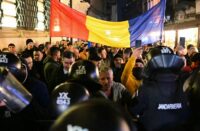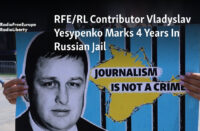In the previous month, a prisoner swap occurred between Russia and Ukraine, with each side exchanging 25 prisoners of war. This marked the first of two such exchanges this year and is among the many that have taken place since the outbreak of the conflict.
It’s noted that a significant number of the soldiers involved in this exchange had sustained severe injuries. One such individual was an Uzbek soldier, who featured in a video released by the Ukrainian side on January 15.
In the video, the soldier recounts his experience, detailing how he spent over a year in captivity in Ukraine, after losing an arm and injuring a leg while fighting for the Russian military. He shared a poignant conversation with a fellow captive, expressing their longing to return home.
The pressing question for the over 50 Central Asian prisoners that Ukraine claims to have captured is when they will be freed. While prisoner swaps between Russia and Ukraine have resumed after a hiatus in 2023, the place of Central Asian prisoners in these negotiations remains uncertain.
The Central Asian prisoners are unsure whether their home governments, which have close ties with Russia but have warned their citizens against participating in the conflict, will intervene on their behalf. To gain a clearer understanding of the situation, RFE/RL journalists have interviewed former prisoners of war, their relatives, and Ukrainian civilian and military officials knowledgeable about the captives.
There is a disagreement between Moscow and Kyiv regarding the fair treatment of prisoners of war who aren’t ethnic Russians or Russian citizens. Russia claims to seek the return of all prisoners of war captured in Ukraine “regardless of their religion, nationality, or affiliation with a military unit.”
However, Ukrainian officials argue that Russia prioritizes its own citizens, especially those from Moscow and St. Petersburg. They note that Central Asians captured by Ukrainian forces are often deployed on the front lines of intense battles.
The plight of these Central Asian prisoners is complicated by issues of dual citizenship and nationality recognition by their home countries. The Ukrainian authorities have thus far declined to disclose how many Central Asian prisoners of war have already been released.
Of the Central Asian prisoners who have been released, their experiences vary. One man, who chose to remain anonymous, reported decent treatment in captivity and acknowledged willingly signing a contract with the Russian Army, albeit with different expectations.
Another prisoner, Alisher Tursunov, gained public attention when a video of him appealing to the Kyrgyz President for help was posted on a Ukrainian-run Telegram channel. He claimed he was tricked into joining the Russian military and was forced into combat roles. His case resonated with the Kyrgyz society and likely contributed to his inclusion in a prisoner swap between Russia and Ukraine in July.
However, when prisoners of war appear in videos, it’s often unclear whether they’re speaking voluntarily or under pressure. Nonetheless, there have been numerous reports of Central Asians being deceived or forced into Russian military service since the war’s inception.




